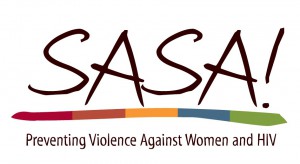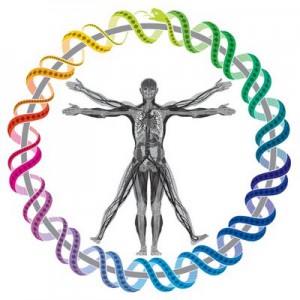Findings from the SASA! Study, a trial assessing the impact of a community intervention in preventing violence against women in Uganda, were published today in BMC Medicine. In this guest post, Tina Musuya, one of the activists implementing the intervention in local communities writes about her personal experience of being involved in the study.
 Since 2004, I’ve worked as a grass roots activist for women’s rights, working with both men and women to prevent violence against women in Uganda. I have come face to face with women who experience violence from their partners and many men who thought that controlling their partners and disciplining them whenever necessary, was normal. Shockingly, I heard many community members say that violence was expected, it’s a private matter and a sign of love and that I shouldn’t meddle in people’s private lives.
Since 2004, I’ve worked as a grass roots activist for women’s rights, working with both men and women to prevent violence against women in Uganda. I have come face to face with women who experience violence from their partners and many men who thought that controlling their partners and disciplining them whenever necessary, was normal. Shockingly, I heard many community members say that violence was expected, it’s a private matter and a sign of love and that I shouldn’t meddle in people’s private lives.
Violence against women is wide spread in Uganda and has been tolerated for a very long time. It thrives on the community’s silence on men’s use of power over women, and it brings immense suffering to women and their communities. Worse still violence against women increases women’s risk of getting HIV/AIDS.
The start of SASA!
In early 2008 we were preparing to start implementation of SASA! in Makindye and Rubaga Divisions in Uganda. SASA! is a community mobilization approach developed by Raising Voices to change social norms that perpetuate violence against women and HIV. My colleagues from Raising Voices and I realized that, although we have been doing this work for some years now, we only had anecdotal evidence that we were making positive changes.
We decided that we needed to work with researchers to conduct a scientific evaluation of our approach so we would know what works and could be certain that what we were doing was transforming people’s lives. Our colleagues from the London School of Hygiene and Tropical Medicine agreed to help us.
We informed The Center for Domestic Violence Prevention (CEDOVIP) and the Raising Voices staff that we were going to conduct a randomized controlled trial (RCT). This required us to have some intervention and control communities to enable comparison of the findings, and therefore our mode of work would deviate from the usual, as the researchers had to randomly choose the control and intervention sites.
The announcement was received with mixed feelings from staff who wondered about how we would be able to avoid ‘contamination’ when the power of our work is that it ‘diffuses’ through communities. Staff were also uncomfortable about their loss of power to choose what they thought were the best communities for implementation of the program.
Since then, CEDOVIP and Raising Voices became involved in the study in various ways. Everything from developing and translating the questionnaires, developing the logic model, and learning about the Enumeration Areas, to establishing contacts with the key community members and closely working with the researchers to enable them get a deeper understanding of what the SASA! approach was about.
It was a real team effort, Raising Voices provided technical support for the implementation and rigorous monitoring and evaluation. CEDOVIP selected, trained and mentored a team of community activists (half men and half women, rooted in the communities) who then reached out to the community members through interesting activities such as community theatre, quick chats, poster discussions, community conversations, and public events.
It was key for everyone to understand the focus of the study and to know what we had to do to uphold the ethics and the objectives of the trial.
Challenges in implementing SASA!
From then on, we had to be closely guided by the time frames and requirements of the research. The hardest task was striking a balance between the goals and needs of the RCT and the existing SASA! program.
Key activities such as media work and engagement of religious leaders had to be stalled for fear of contamination of the control communities. We also laboured to enable the community activists to desist from reaching out to their peers and relatives in the control communities.
This was a difficult dilemma because for them, the most important thing was to inspire people closest to them to make positive changes in their lives, and if SASA! was beneficial to them then why not spread the word to others?
We also felt exposed because the researchers accessed all information about our work, budgets, areas of strength and areas of weakness.
Getting involved in the SASA! study came with both excitement and anxiety. I felt hopeful that one of the key questions that we had grappled with for many years was about to be answered. If it worked, we would make significant contribution to the field of violence prevention. Yet on the other hand I could not stop worrying about what would happen to CEDOVIP, Raising Voices and my own career if the results indicated that the approach did not have the desired impact on the desired outcomes.
Delivering the SASA! program became so personal for me. I learnt how to read and write the local language so that I could ensure that the concepts and words used in the translation were reflective of the SASA! values. I read each and every report from the field and whenever there were hurdles such as Community Activists (CAs) dropping out, or not implementing scheduled activities, or whenever there were political conflicts that led to postponement of programming, it hurt me badly because I was always worried about the tight three year research time frame that we had to stick to. During planning, we did not anticipate so many challenges!
Reception of SASA! in the community
While the women in the intervention sites were receptive to the SASA! ideas, initially men were nervous and resistant owing to the fact that the community members talked in depth about how each person was using their power.
As the discussions deepened, many men and women came to us to talk about how they could practically balance power with their partners, the fears they had about losing power, and where to seek support.
Both men and women felt relieved when they learnt that balancing power with their partner does not mean losing power, but actualizing the values of respect, fairness, ensuring the safety of your partner, improved communication, and taking action to prevent violence in their own relationships and communities.
Women spoke of men’s use of power over them which often made them feel powerless leading to heightened tensions in the home. This often lead to the possibility of their partners’ unfaithfulness and risk of HIV infection, as most men would not accept their partners saying no to sex or using protection.
Additionally, the women faced a lack of support from the community and places to seek help. They spoke of how their neighbours, people in authority and even their own families would often blame them for the violence they experienced, yet not much was being done to hold those who perpetuate violence accountable for their actions.
It was not until SASA! became a trade name in the communities that both men and women understood how violence against women increased their risk of HIV/AIDS. After a while, the communities saw that they needed to challenge the injustices, beliefs, norms and practices that sustained the factors that increased women’s risk of violence and HIV.
SASA! inspired many women and men to speak out against partner violence and to take actions within their means to create a supportive environment. An environment where both women and men are equally respected and treated fairly, with their safety in both private and public spaces prioritized at all times.
I talked with lots of couples who had improved their relationships as a result of SASA! Many women reported that their partners treat them better, for instance they made joint decisions about their lives, they discussed things as a couple without use of violence, and they spent much more time together as a family.
Men became more supportive of their partners working away from home, and many women talked of their ability to say no to sex or to request use of protection, and most importantly that their partners were supportive of this. One woman in Kitebi once remarked that ‘SASA! gave her back her life’.
 BMC Medicine: passionate about quality, transparency and clinical impact
BMC Medicine: passionate about quality, transparency and clinical impact
2013 median turnover times: initial decision three days; decision after peer review 51 days
Comments